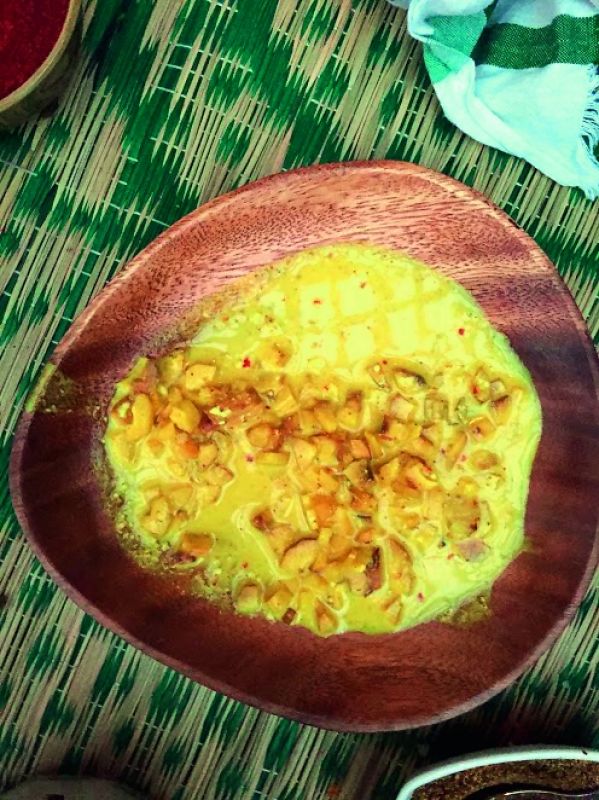Kapur's such a acharacter!
Chef Kunal Kapur went in search of these unique pickle recipes, as part of his pickle encyclopedia.

The benchmark to judge a civilisation is always through the discovery and understanding of its arts. The art of preserving food is the biggest science. It is said that the very first pickles in the world came from India. And preserving food is a reflection of the advancement in society. As I have set out on this journey to document the most unique pickles of India, I have rediscovered amazing facts and a boundless love for pickles. The Tamilian Brahmins pickle a root Mahal, not in oil, vinegar or salt but in buttermilk and turmeric. On the other hand, in Meghalaya the Khasi tribe has been practising a dance form performed by young couples which reveals the recipe of its Bamboo Pickle. The Parsis make a pickle (Lagan nu Achar) before any couple’s married, and shared with the family, if approved, the marriage is approved.
The Pickle Tickle campaign documents the largest collection of unique pickles from each state and asks anyone to contribute a unique pickle recipe or recommend a pickle or even a maker. I will travel and learn how to make it and document its recipe with the maker.
India, with its large collection of pickles, has never documented its pickle history. Pickling is a dying art, and my book features pickles from the north east to Jammu and Kashmir, to Andaman and Nicobar.
Naga Akhuni pickle
Akhuni is a bean that grows abundantly in the North East. The people of Nagaland use it to flavour their food. Beans are carefully fermented, smoked and spiked with bhoot jholakia. it is best eaten with rice.
Ingredients
Akhuni lightly smoked (fermented beans) 500 gm
Dry bhoot jholakia chillies 3 nos
Oil 3 tbsp
Ginger a large knob
Garlic cloves 10 nos w Coarse salt 2 tbsp
Peppercorn a few
Method
Heat a tbsp oil and fry chillies till crisp. Remove, and along with ginger, garlic, salt and peppercorn, pound them into a fine powder. Mix with akhuni. Heat remaining oil, add marinated akhuni, toss for two to three minutes. Remove and cool it. Bottle and use it.
Mahali
Mahalo is a wonder root. It is pickled by the Tamilian Brahmin families in India. The root itself smells of strong vanilla, cinnamon and bitter almonds and has medicinal properties. It is a miracle to see that mahal root is pickled in buttermilk without oil or vinegar and survives for over two years. It has a beautiful light smell.
Ingredients
Mahali roots — 1 kg (Select roots by scratching skin off the root. It should be tender and nearly white inside. If root is not tender, it will not soften.)
Rock salt — 3/4 cup. It enhances the shelf life of the pickle.
Butter milk — 800 gm as it prevents the root from losing colour).
Turmeric powder 1-1/2 tbsp
Red chilly dried 15 nos
Mustard — 3 tbsp
Lime juice 1/2 cup
Method
Soak roots in a tub of water so the mud, comes out. Immersing in water also makes roots softer. Peel outer skin and drop them, one by one, in a big vessel filled with water in which half cup of butter milk is added. Butter milk prevents the root from darkening. The root has got a stick-like centre (thandu) which is not edible, cut it into two pieces into half-moon shapes. Remove hard stem running in between, discard. Chop into small pieces. Put the pieces into a dry vessel and keep at room temperature till masalas are prepared. Grind salt, turmeric, red chilli with mustard seeds. Put ground powders into a vessel and mix well. Now add Mahali into the vessel and mix. Pour butter milk with lime juice, mix. Keep aside for four days in a dry shadey place.
The only pickle in Tamil Nadu made in buttermilk that stays for two years without refrigeration. The chemical reaction between the roots and buttermilk helps prolong shelf life. The Mahani grows in the monsoon.
The writer is a celebrity chef who is travelling the country for his book documenting pickles.

